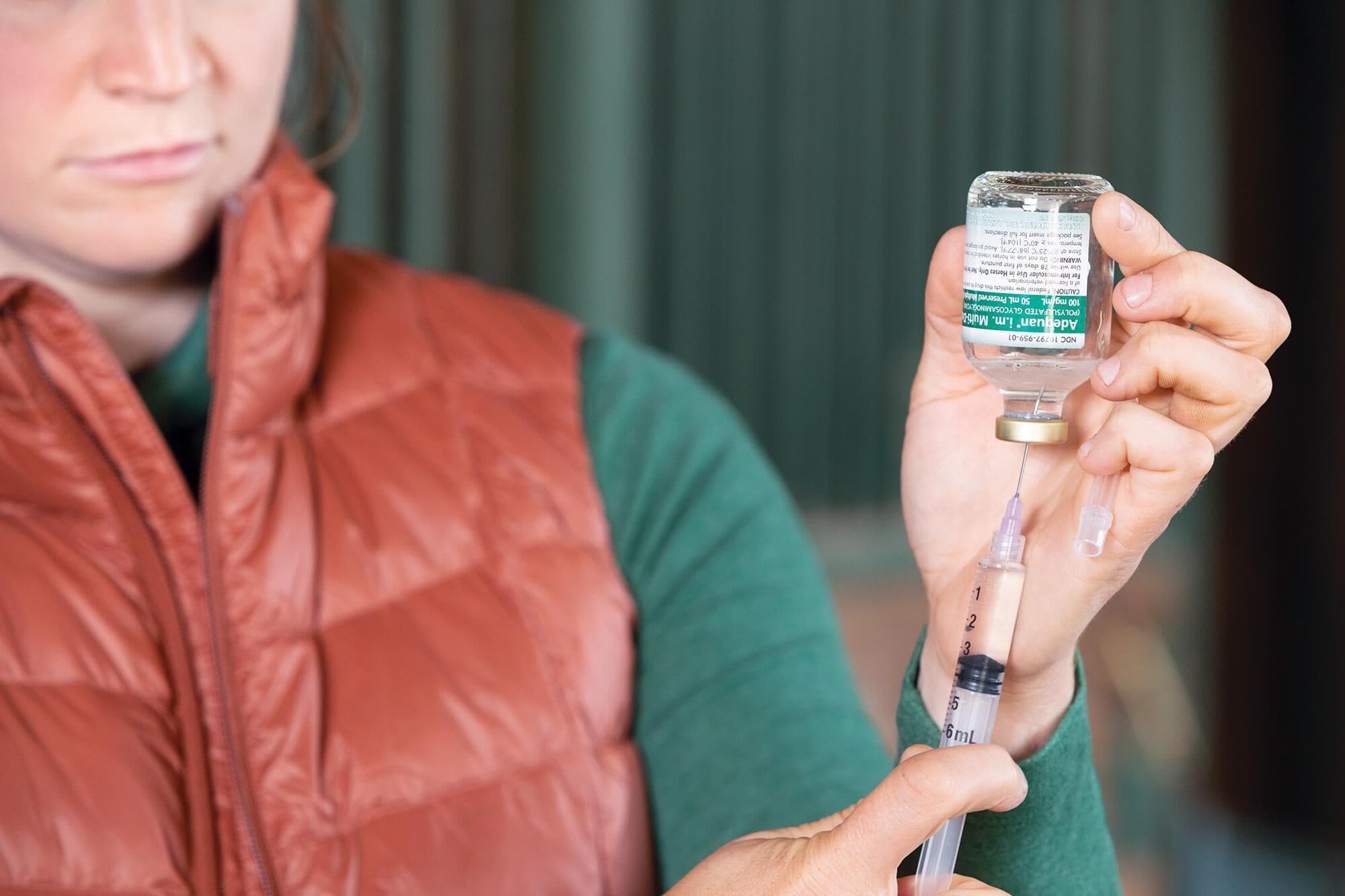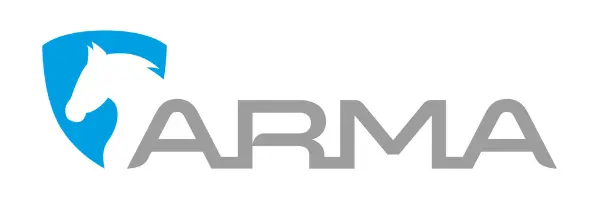Senior Horse Love—and Health

Horses are living and working longer. In fact, 11.4% of the horse population was 20 years old or older in 2015, up from 5.5% in 1998, according to the most recent equine industry report (2017) from the USDA’s National Animal Health Monitoring System. If you consider a senior horse to be 15 years or older, as many veterinarians do, the number of senior horses increases even more.
These numbers are coming to life for horse owners and veterinarians across the country. “When I started out in this business over 40 years ago, you seldom saw a high-level Western performance horse over 13, 14 or 15 years old,” said Gary White, DVM, owner of Sallisaw Equine Clinic in Oklahoma. But he added that today, “we see high-level horses in these disciplines up to 20 years old. Then a lot of them switch to the ‘playdays’ and school horses and perform into their late 20s.”
Longer riding careers for horses mean more riders can embrace the joys of senior horses: learning from the horse’s calm demeanor, the been-there-done-that approach to situations that may spook greener horses, and the knowledge of how to do a job well even if the rider doesn’t share the same level of experience.
Never Too Old for Wellness Care
To reap these rewards, preventive care is essential. It starts with developing a plan to extend not only the horse’s lifespan but also its health span. In other words, working with a veterinarian to provide regular wellness care doesn’t just help keep horses living longer, it also helps keep them living healthy longer.
Talk to your veterinarian about what to expect as your horse ages. Implementing wellness care helps delay the onset of age-related changes, such as loss of muscle mass and decreased stamina. It also helps define your horse’s baseline so it’s easier to determine whether your horse is exhibiting normal signs of aging or potential signs of age-related illness. If you suspect illness, diagnostic tests will help you and your veterinarian decide on the best way to manage it in the short- or long-term.
As horses increase in years lived well, their ability to handle everyday environmental stressors decreases. To compensate, you’ll likely need to adjust your approach to care and riding. For example, senior horses may need:
- Longer warm-ups and cooldowns
- More robust shelter in temperature extremes
- Consistent herd or stablemates
- Separate eating areas away from other horses or more time to eat in the face of changing herd hierarchy
- Altered diet to address impaired fiber and nutrient absorption that can cause increased risk of impaction colic
- Regular dental care to help ensure optimal digestion and nutritional use of feed
Active rest is another beneficial adjustment, says Christopher Kawcak, DVM, PhD, DACVS, DACVSMR, director of Equine Clinical Services at Colorado State University. When horses know their jobs, practicing the discipline less and working more on core strength and stability helps decrease weakness and avoid undue impact on aging joints.
Lameness: Not a Question of if but When
Speaking of joints, while arthritis and associated lameness can happen to any horse at any time, the likelihood increases with age. Consider this: Horse owners and veterinarians name lameness as the No. 1 problem in healthy aged horses.1 More than half of horses 15 years old and older are grade 3/5 lame. [1]
Degenerative joint disease (DJD), also called osteoarthritis, causes up to 60% of lameness in horses. [2] Anecdotally, veterinarians are seeing more cases of arthritis, especially in senior horses. For Rick Mitchell, DVM, MRCVS, DACVSMR, an owner of Fairfield Equine Associates in Connecticut, a number of his patients are 15-year-old or older horses that were once high-performance competitors. “They certainly do demonstrate a significant amount of osteoarthritic changes,” he said.
Identifying DJD as early as possible allows you and your veterinarian to take measures to help slow its progression and effects. Watch for subtle changes in gait or willingness to perform that could indicate DJD. Even if your senior horse has not yet developed overt signs of DJD, time is not on their side and medical therapies may still be necessary to maintain soundness.
No One-Size-Fits-All Arthritis Treatment
To help keep an arthritic horse moving comfortably, veterinarians may recommend a combination of therapies and medications. The ideal situation is to reduce the symptoms of DJD, such as lameness, while also slowing the disease progression.
Veterinarians participating in a recent roundtable discussion on DJD agreed that some clients are more willing than others to pay for diagnoses and treatments. Regardless of whether your older horse still competes or is enjoying retirement, veterinarians want to “offer the best alternative first, [and] if that’s not workable, find out what is,” said Dr. White.
After all, what’s right for one horse might not be right for another—especially when it comes to older horses. “Those horses have hock issues, stifle issues, maybe a knee, and coffin joints,” said Robin Dabareiner, DVM, PhD, DACVS, who worked at Texas A&M for 23 years before working at Waller Equine Hospital in Texas. “And it’s just not efficient to inject multiple joints on an older horse like that. I think some of those tough old horses just need a little daily bute. I’ve had horses that have been on a gram of bute for years, and they can still go out there and do their job. And I strongly encourage the use of Adequan [i.m. (polysulfated glycosaminoglycan) for DJD] and have been impressed with the treatment response.”
To effectively manage DJD and maintain joint health in your senior horse, understanding the differences among joint products is critical. Here are some of the most common—and they’re not all created equal.
Non-steroidal anti-inflammatory drugs (NSAIDs). NSAIDs are an FDA-approved class of drugs indicated for reducing pain and inflammation associated with DJD. The most commonly used is phenylbutazone (often referred to as “bute”), and many generic formulations are available.
Adequan® i.m. (polysulfated glycosaminoglycan). Adequan® i.m. is the only FDA-approved polysulfated glycosaminoglycan (PSGAG) for DJD. There is no generic equivalent for Adequan® i.m. It is the only product proven to: [3,4]
- Reduce inflammation
- Restore synovial joint lubrication
- Repair joint cartilage
- Reverse the disease process
Please see Brief Summary of Important Safety Information for Adequan i.m. below.
Medical devices. These are an instrument, apparatus, implement, machine or implant that does not achieve its intended purpose primarily through chemical action within or on the body. [5] Medical devices include items like contact lenses and knee braces. These products are regulated by the FDA, but there are currently no requirements for FDA premarket approval of medical devices intended for animal use. [5] While some medical devices for horses include ingredients with similar names, they are often indicated for wound management and are not generics or substitutes for Adequan® i.m.
Supplements. Classified as nutraceuticals, supplements are indicated to support joint health. While supplements are regulated by the FDA, manufacturers are not always required to seek the same stringent premarket authorization or approval as FDA-approved drugs. Many well-intentioned horse owners mistakenly think of supplements as arthritis products, but supplements are not indicated to manage or treat arthritis.
Talk with your veterinarian about the differences among these products. Choosing the product or products that are right for your senior horse can make a real difference in health and soundness. The same is true for wellness care in general. After all, the goal for senior horse health is repaying them for being wonderful competitors and companions. With the right wellness care, they’ll live their golden years feeling and moving well.
BRIEF SUMMARY: Prior to use please consult the product insert, a summary of which follows: CAUTION: Federal law restricts this drug to use by or on the order of a licensed veterinarian. INDICATIONS: Adequan® i.m. (polysulfated glycosaminoglycan) is recommended for the intramuscular treatment of non-infectious degenerative and/or traumatic joint dysfunction and associated lameness of the carpal and hock joints in horses. CONTRAINDICATIONS: There are no known contraindications to the use of intramuscular Polysulfated Glycosaminoglycan. WARNINGS: Do not use in horses intended for human consumption. Not for use in humans. Keep this and all medications out of the reach of children. PRECAUTIONS: The safe use of Adequan® i.m. in horses used for breeding purposes, during pregnancy, or in lactating mares has not been evaluated. For customer care, or to obtain product information, visit www.adequan.com. To report an adverse event, please contact American Regent Animal Health, Inc. at 1-888-354-4857 or email [email protected].














